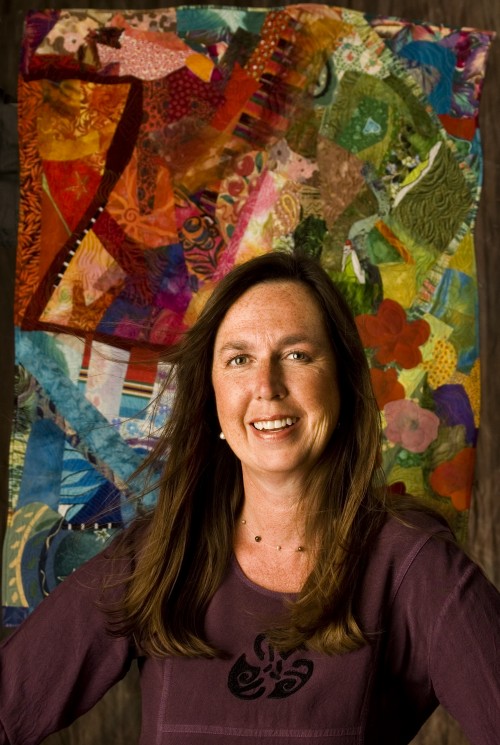In the beginning, in 1998, we held Flagstaff Open Studios to make art more accessible to the general public and the art-making process less mysterious. People came to our studios, and we did it again the next year. Fourteen years later, we’re still making our art and telling our stories. I’ve missed a couple of years, once because I had a brutal bronchial infection and once because I went to see the Dalai Lama in Tucson. Good excuses, both.
Artists might have a few more creative bones than your average Joe-Sixpack; what sets us apart is that we exercise those bones more often. We’re kind of a hard-working bunch, to be honest. There’s a bumper sticker that says, “Real Musicians Have Day Jobs” and that could be true. But the real truth is that we come in all stripes: some artists have day jobs, some have trust funds, some have patrons. Some artists have great commercial success with their art.
There are, apparently, a lot of people who believe that Thomas Kinkade is a really great artist, and his commercial success is certainly a testament to that.
But does commercial success define great art? Not so much, maybe. Think of two overlapping circles, one containing “great artists” and the other containing “commercially successful artists.” There’s some overlap, but there are a lot of artists who live in one circle or the other, but not both. And who lives in which circle and the overlapping real estate depends on who’s defining “great art” and “commercial success.”
Ten years ago my work was selling at higher prices than the current market will bear. Those prices weren’t a function of increased worth, nor are the current prices indicative of a diminished inherent value. I’ve learned that the art market will bear what it will bear.
After a brutally difficult few years for galleries and artists, I’ve heard there are fewer and fewer actual collectors out there, but I’ve been fortunate to meet and work with some of the remaining ones. I’m always proud to have my art become part of a collection that seems based on a true affinity for the work.
Too often, art gets collected for reasons that have nothing to do with that connection. There’s a tendency among some to collect art that’s pretty and inoffensive, decorating their spaces with “trophy art” that asks nothing of the viewers’ intellects.
But I see my jobs as artist and writer as having less to do with the end product, and more to do with the ideas behind the product, an interpretation of my surroundings, and this is why I don’t do realism. I know there’s an audience out there who want to know what I feel, not just what I see.
Tonight I’m sitting in a downtown bar, eavesdropping on the conversation of a group of Harley enthusiasts from North Carolina as they talk about their hometown. Garrison Keillor they’re not, but I hear stories about how one of the local bad boys buys every judge in the county a country ham every Christmas. I hear who leaves his curtains open every night when he’s watching television, and who of the group nearly got thrown in jail at age 16 for speeding and how, after a stern talking-to by the judge, he straightened up and turned out OK.
The bartender explains that she only has pork and green chili burritos or vegetarian burritos left, and a bleach-blonde Harley babe goes for the veggie burrito. One of the guys launches into a Ronnie Milsap imitation as the jukebox starts up.
Truly, my job is so much like my original career path as a journalist: I read and process what I see around me, discover by observing and asking questions. Then I bring my own personality to bear on what I’ve learned; that’s where the art enters in.
I never thought I’d be an artist. My tribe was comprised of readers and writers, but also practical people who knew how to do things with their hands: build things and clean things, do the hard work of labor, driving, manufacturing and construction. They didn’t consider much of what their labors wrought. They were just focused on the process.
The 14th annual Flagstaff Open Studios happens Aug. 27 and 28, from 10 a.m. to 5 p.m. Maps and brochures are available at www.culturalpartners.org.

